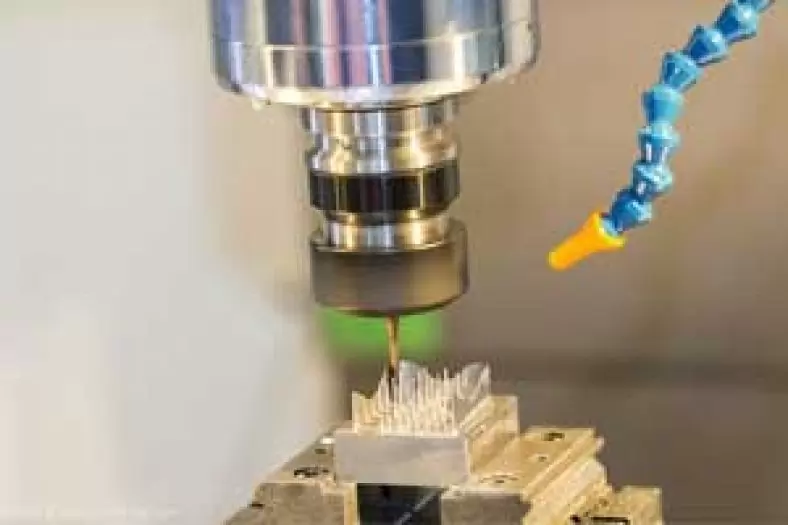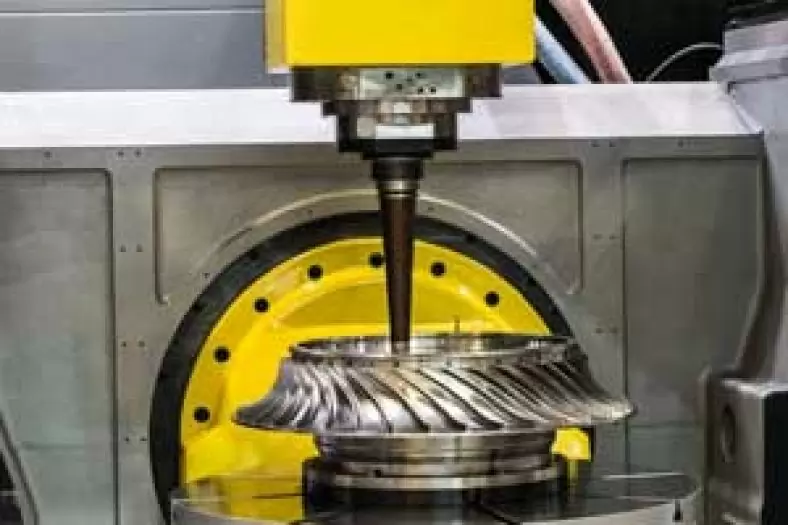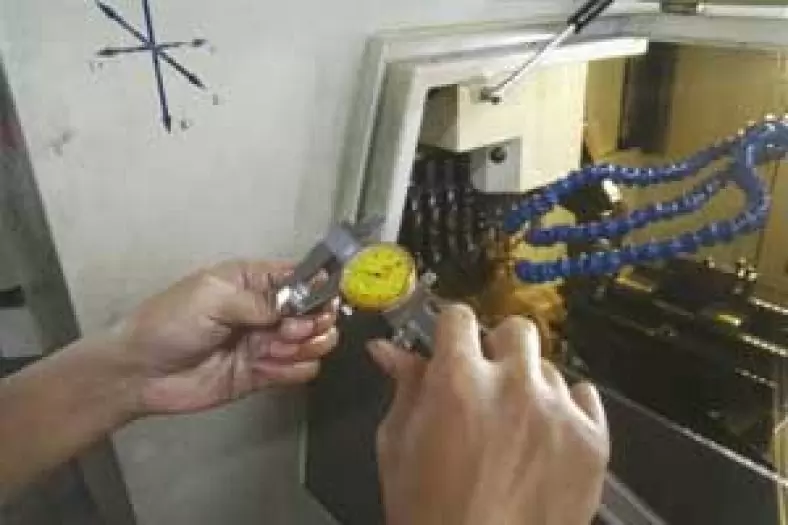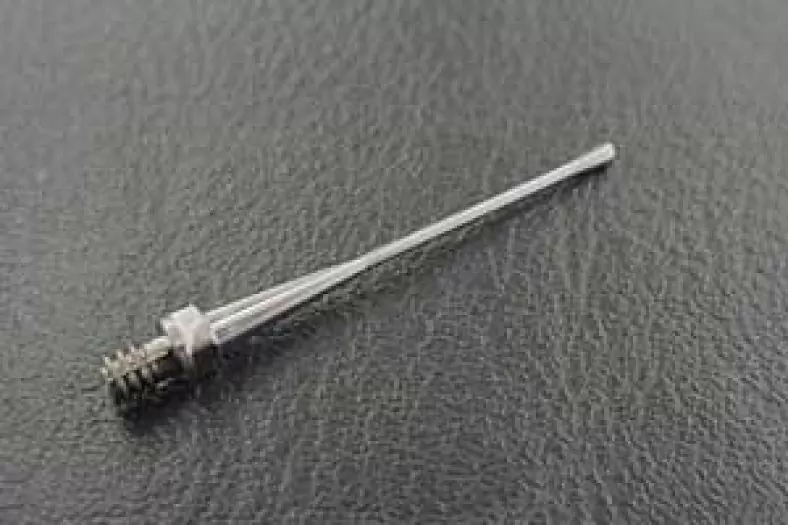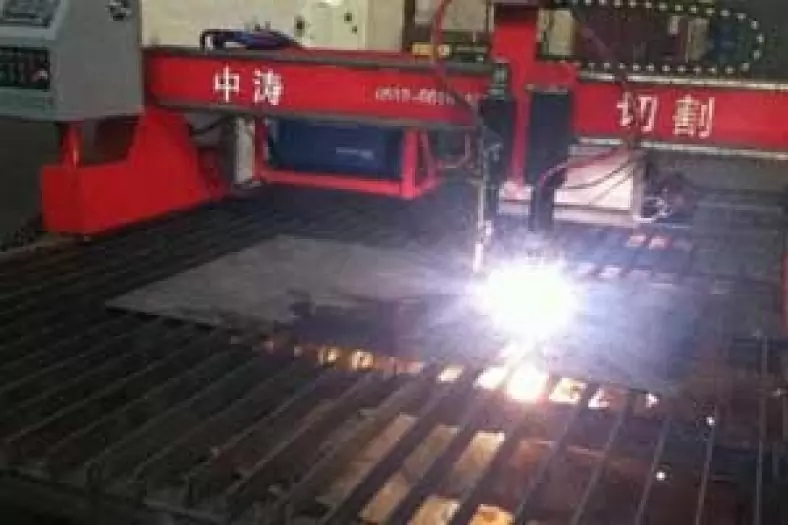
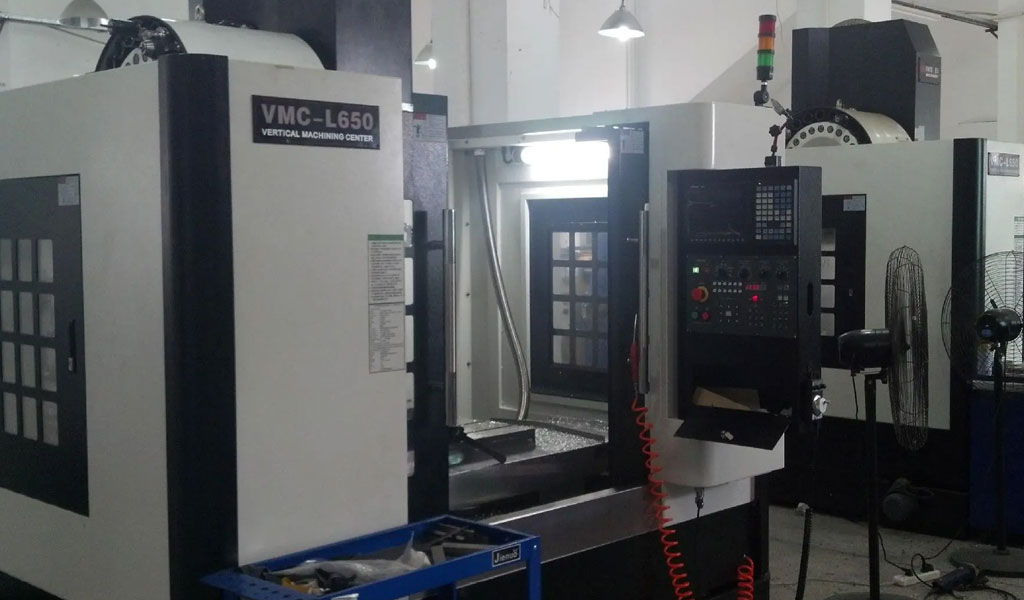
Reducing lead time in computer numerical control (CNC) machining is crucial for improving efficiency and meeting customer demands.Across companies of all sizes, increasing the speed of new product innovation has become much more important in 2023 (49%, a jump of 11% YoY), especially for engineering leaders. Here are ten tips to help you reduce CNC lead time:
1.Optimize Design for Manufacturability
Optimizing design for manufacturability is a crucial step in reducing CNC lead time. Here are some specific tips to help you achieve this:
- Simple Geometries: Design parts with simple geometries that are easier to machine. Avoid unnecessary complexities, intricate curves, or intricate features that require multiple setups or tool changes. Simple shapes can be machined more efficiently and quickly.
- Minimize Tight Tolerances: Tight tolerances increase the complexity of machining and may require additional time for setup and verification. Unless absolutely necessary, design parts with tolerances that are achievable with standard machining processes. This helps reduce lead time by simplifying the machining requirements.
- Standardize Parts: Whenever possible, standardize part designs across different products or assemblies. This allows for the reuse of tooling, fixtures, and programs, reducing the setup time for machining. Standardization also simplifies material procurement and inventory management.
- Avoid Overly Small Features: Extremely small features or intricate details can significantly increase machining time. Design parts with larger features that can be machined more efficiently, reducing the lead time. If small features are required, consider alternative manufacturing methods like additive manufacturing or post-machining techniques.
- Eliminate Unnecessary Operations: Carefully analyze the part’s function and the machining operations required. Identify and eliminate any unnecessary machining operations that do not add value to the final product. Streamlining the operations reduces machining time and overall lead time.
- Design for Automated Machining: Take advantage of automated machining capabilities by designing parts that can be easily handled by robotic arms or CNC machines with automated tool changers. This allows for continuous machining without manual intervention, minimizing setup and changeover times.
- Consider Material Selection: Choose materials that are readily available, easy to machine, and have shorter lead times. Discuss material options with your supplier to select the most appropriate one that meets the functional requirements of the part while optimizing the machining process.
- Design for Tool Accessibility: Ensure that the design allows for easy tool access to all machining areas. Avoid deep pockets or features that may require long-reach tools or multiple setups. Design parts in a way that allows for efficient tooling and avoids unnecessary tool changes.
- Utilize Standard Tooling: Design parts that can be machined using standard off-the-shelf tools. Custom or specialized tooling may have longer lead times due to manufacturing or delivery delays. Standard tooling is readily available and helps reduce setup times.
- Test Prototypes: Before proceeding with full-scale production, prototype the design to identify any potential manufacturability issues. Test the design with a small batch production run to evaluate the machining processes, uncover any challenges, and make necessary design revisions.
By following these design optimization tips, you can greatly reduce CNC lead time by simplifying machining requirements, minimizing setup and changeover times, and maximizing efficiency in the manufacturing process.
2.Material Selection
Material selection plays a significant role in reducing CNC lead time. Here are some tips for selecting materials that can help streamline the machining process and minimize lead time:
- Machinability: Choose materials that have excellent machinability characteristics. Some materials, such as aluminum, mild steel, or certain grades of stainless steel, are known for their ease of machining. They have good chip control, low tool wear, and can be machined at higher speeds, which can help reduce machining time.
- Availability: Opt for materials that are readily available from reliable suppliers. Ensure that the selected material is easily accessible and has a stable supply chain. This reduces the lead time associated with material procurement and minimizes the risk of production delays due to material shortages.
- Standard Stock Sizes: Check if the material is available in standard stock sizes. Using standard stock sizes eliminates the need for custom material preparation, such as cutting larger blocks or sheets to size, which can add time and cost. Selecting materials in standard sizes allows for faster setup and machining.
- Material Cost: Consider the cost of the material in relation to your project’s requirements. While exotic or specialized materials may offer unique properties, they can also be expensive and have longer lead times for sourcing. Evaluate whether the benefits of these materials outweigh the potential delays and increased costs.
- Design Requirements: Align the material selection with the functional requirements of the part. Consider factors such as strength, corrosion resistance, thermal properties, or electrical conductivity, depending on the specific application. Choosing a material that meets the design requirements while being easily machinable can help reduce lead time.
- Material Consistency: Opt for materials with consistent properties and minimal variation between batches. Materials with consistent composition and mechanical properties ensure predictable machining outcomes, reducing the need for additional quality checks or rework due to material inconsistencies.
- Compatibility with Cutting Tools: Ensure that the selected material is compatible with the cutting tools available. Some materials may have unique characteristics that require specific tooling, coatings, or machining techniques. Compatibility with existing tools reduces the need for additional tooling procurement or adjustments, saving time and cost.
- Material Complexity: Evaluate the complexity of the material. Some materials, such as custom machined plastic parts or softer metals, can be machined more rapidly than harder or more brittle materials. Consider the trade-offs between material properties and ease of machining, and select a material that balances both factors.
- Experience and Expertise: Take into account the experience and expertise of your machining team with different materials. If your team has extensive knowledge and familiarity with certain materials, it can help streamline the machining process and minimize lead time.
- Discuss with Suppliers: Engage in discussions with material suppliers to understand their lead times, availability, and any potential challenges related to the material. They can provide insights on material selection based on your requirements and offer alternative suggestions that can expedite the manufacturing process.
By considering these factors during material selection, you can choose materials that are conducive to efficient CNC machining, reduce lead time, and optimize the overall manufacturing process.
3.Use Standard Tooling
Using standard tooling in CNC machining can significantly contribute to reducing lead time. Here are some tips for leveraging standard tooling to streamline the process:
- Standard Tool Library: Establish a comprehensive library of standard tools that are commonly used in your machining operations. This library should include various types of end mills, drills, taps, and other cutting tools that are readily available in the market.
- Tool Supplier Relationships: Develop strong relationships with reliable tool suppliers. Partnering with suppliers who offer a wide range of standard tools ensures quick access to the required tools when needed, minimizing lead time associated with tool procurement.
- Tool Standardization: Standardize tooling across your machining processes as much as possible. Limit the number of different tool types and sizes used in your operations. Using a consistent set of standard tools simplifies tool selection, reduces tool changeovers, and minimizes setup time.
- Tool Life and Maintenance: Optimize tool life through proper maintenance and monitoring. Regularly inspect and maintain tools to ensure they are in good condition. Implement tool life tracking systems to replace tools at the right time and avoid unexpected tool failures that can cause delays.
- Tool Presetting: Utilize tool presetting or tool measurement systems to pre-measure and set tool lengths and diameters offline. This enables faster and more accurate tool changes during setups, reducing the time spent on tool setup and verification on the machine.
- Tooling Documentation and Procedures: Develop clear and detailed documentation for each standard tool, including information about speeds, feeds, cutting parameters, and setup instructions. This documentation should be easily accessible to operators and programmers, facilitating consistent and efficient tool usage.
- Tool Reconditioning: Implement a tool reconditioning program to extend the life of your standard tools. Some tools, such as end mills or drills, can be resharpened or recoated to restore their cutting performance. This helps reduce tooling costs and lead time associated with tool replacement.
- Tooling Inventory Management: Maintain a well-organized tool inventory system. Regularly monitor tool stock levels and reorder standard tools in a timely manner to avoid running out of essential tools during machining operations. Efficient tool inventory management prevents delays caused by tool unavailability.
- Operator Training: Provide comprehensive training to operators on the proper handling and usage of standard tools. This includes tool setup, inspection, and maintenance procedures. Well-trained operators can optimize tool usage, prevent tooling errors, and ensure efficient machining processes.
- Continuous Improvement: Encourage feedback from operators and programmers regarding tool performance and identify opportunities for improvement. Evaluate new tooling technologies or advancements that can further enhance machining efficiency and reduce lead time.
By leveraging standard tooling practices, you can minimize lead time associated with tool procurement, reduce setup and changeover times, and establish efficient machining processes.
4.Minimize Tool Changes
Minimizing tool changes in CNC machining is an effective strategy for reducing lead time. Here are some tips to help you minimize tool changes and improve efficiency:
- Optimize Tool Paths: Work closely with your CNC programmer to optimize tool paths and minimize the number of tool changes required. Analyze the machining operations and sequence to identify opportunities for tool consolidation and reducing unnecessary tool changes.
- Utilize Multi-Functional Tools: Explore the use of multi-functional tools that can perform multiple operations without the need for tool changes. For example, a tool with both drilling and milling capabilities can eliminate the need for separate drilling and milling operations, reducing setup time and tool changeovers.
- Tool Selection and Sizing: Select tools that can perform multiple operations or reach multiple features within the same setup. Consider the tool’s size and reach to ensure it can access multiple areas without requiring additional tool changes.
- Tool Holding Systems: Implement tool holding systems that allow for quick and reliable tool changes. High-quality tool holders with fast clamping mechanisms reduce the time spent on tool changes and provide better repeatability during setups.
- Pre-Staging Tools: Pre-stage tools in tool magazines or tool turrets to have them readily available for upcoming operations. This eliminates the need to retrieve tools from storage or search for them during setup, saving valuable time.
- Standardize Tooling Across Operations: Whenever possible, standardize tooling across different machining operations. This allows for the reuse of tools and eliminates the need for frequent tool changes. Standardization also simplifies tool management and reduces the risk of tooling errors.
- Tool Presetting: Utilize tool presetting or tool measurement systems to measure and set tool lengths and diameters offline. Pre-setting tools before the setup reduces the time required for on-machine tool measurements and adjustments, minimizing tool changeover time.
- Batch Machining: If feasible, batch similar parts or operations together. By machining multiple parts with the same tool setup, you can minimize the number of tool changes required. This approach maximizes efficiency and reduces lead time by reducing setup overhead.
- Tool Life Management: Optimize tool life management to ensure tools are changed only when necessary. Implement a tool life tracking system that monitors tool wear and prompts tool changes based on predefined criteria. Avoid premature tool changes that can result in unnecessary downtime.
- Operator Training and Skill Development: Provide comprehensive training to operators on efficient tool handling and tool change procedures. Well-trained operators can perform tool changes quickly and accurately, minimizing the time required for setup and reducing the risk of errors.
By implementing these tips, you can significantly reduce lead time by minimizing tool changes and optimizing the machining process. Efficient tool management and strategic planning contribute to improved productivity and overall operational efficiency.
5.Optimize Cutting Parameters
Optimizing cutting parameters is crucial for reducing CNC lead time while maintaining quality and productivity. Here are some tips to help you optimize cutting parameters and improve machining efficiency:
- Spindle Speed: Determine the appropriate spindle speed for the material and tooling being used. Higher spindle speeds can increase cutting efficiency, reduce machining time, and improve surface finish. However, ensure that the spindle speed is within the recommended limits for the tool and material to avoid tool damage or excessive heat.
- Feed Rate: Optimize the feed rate based on the material, tooling, and desired cutting parameters. Higher feed rates can increase productivity by reducing machining time. However, it’s essential to strike a balance between feed rate and tool life to avoid excessive tool wear or tool breakage.
- Depth of Cut: Adjust the depth of cut based on the material and tool capabilities. Increasing the depth of cut can improve material removal rates, but be cautious not to exceed the tool’s limitations or risk compromising surface finish and accuracy. Find the optimal depth of cut that balances productivity and tool life.
- Cutting Tool Selection: Choose cutting tools that are suitable for the specific machining operations and materials involved. Different tool geometries, coatings, and materials are designed for specific applications. Select tools that offer higher cutting speeds, longer tool life, and improved chip evacuation to enhance machining efficiency.
- Cutting Tool Cooling/Lubrication: Ensure effective cooling and lubrication of cutting tools. Proper cooling and lubrication help dissipate heat, reduce tool wear, and improve chip evacuation. Consider using coolants or cutting fluids that are compatible with the material being machined to enhance both tool life and machining efficiency.
- Trochoidal Milling Strategies: Implement trochoidal milling strategies, such as high-speed machining or adaptive milling. These strategies involve using high-speed toolpaths that optimize cutting parameters, tool engagement, and chip evacuation. Trochoidal milling can significantly reduce machining time while maintaining tool life and surface finish.
- Tool Engagement: Optimize the tool engagement strategy by considering the material, tooling, and stability requirements. Avoid excessive tool engagement or cutting parameters that result in vibrations, chatter, or reduced surface finish. Find the optimal balance that allows for efficient material removal while maintaining stability and tool performance.
- Cutting Data Monitoring: Implement real-time cutting data monitoring systems that track and analyze key parameters during machining. This allows you to identify potential issues, such as tool wear or abnormal cutting conditions, and make necessary adjustments promptly. Monitoring cutting data helps optimize parameters and ensures consistent machining performance.
- Machine Rigidity and Stability: Maintain the machine’s rigidity and stability to support optimal cutting parameters. A stable machine minimizes vibrations and allows for higher cutting speeds and feeds. Regularly inspect and maintain the machine’s mechanical components, including spindle, bearings, and tool holders, to ensure stability during machining.
- Continuous Process Improvement: Continuously evaluate the cutting parameters and seek opportunities for improvement. Encourage feedback from CNC operators and programmers, and collaborate to refine cutting strategies and optimize parameters based on their practical insights and experiences.
By optimizing cutting parameters, you can significantly reduce CNC lead time while maximizing productivity and maintaining quality. However, it’s crucial to strike a balance between aggressive cutting parameters and the limitations of the material, tooling, and machine to avoid compromising the machining process.
6.Implement Parallel Operations
Implementing parallel operations is a valuable strategy for reducing CNC lead time by overlapping and maximizing productivity. Here are some tips to help you implement parallel operations effectively:
- Identify Opportunities: Analyze the machining process and identify operations that can be performed simultaneously without interfering with each other. Look for tasks that can be executed concurrently, such as roughing and finishing operations on different areas of the part or running multiple machines simultaneously.
- Workstation Layout: Optimize the layout of your workstations to facilitate parallel operations. Arrange machines, workbenches, and tool storage in a way that allows operators to work on different tasks simultaneously without unnecessary movement or waiting time.
- Multi-Tasking Machines: Consider investing in multi-tasking machines that can perform multiple operations in a single setup. These machines combine multiple machining capabilities, such as milling, turning, drilling, and grinding, reducing the need for part transfers and setup changes between different machines.
- Efficient Workflows: Streamline your workflows to ensure a smooth flow of parts and materials throughout the machining process. Minimize waiting time between operations by synchronizing the arrival of materials, tooling, and workpieces to keep the machines running continuously.
- Tooling Duplication: Duplicate commonly used tools and holders to avoid unnecessary tool changes and reduce setup time. Having duplicate tools readily available for different operations eliminates the need to swap tools between tasks, allowing for parallel operations.
- Cross-Training: Cross-train your operators to perform multiple tasks and operations. This allows them to switch between different tasks and machines as needed, reducing dependencies and enabling parallel operations. Cross-training enhances flexibility and ensures smooth workflow continuity.
- Monitoring and Coordination: Establish effective monitoring systems and communication channels to track the progress of parallel operations. Regularly communicate with operators to ensure synchronization, resolve bottlenecks, and address any issues that may arise during the process.
- Continuous Improvement: Continuously evaluate the effectiveness of parallel operations and identify areas for improvement. Encourage feedback from operators and regularly review the workflow to optimize processes and maximize the benefits of parallel operations.
By implementing parallel operations, you can significantly reduce CNC lead time by maximizing the utilization of resources and minimizing idle time. Efficient planning, coordination, and workflow optimization are key to successfully implementing parallel operations and enhancing overall machining efficiency.
7.Prioritize Machine Maintenance
Prioritizing machine maintenance is crucial for reducing CNC lead time and ensuring uninterrupted production. Here are some tips to help you prioritize machine maintenance effectively:
- Preventive Maintenance Schedule: Establish a regular preventive maintenance schedule for each CNC machine in your equipment in cnc machining china factory. Develop a comprehensive maintenance plan that includes routine inspections, cleaning, lubrication, and calibration of machine components. Adhere to the schedule strictly to prevent unexpected breakdowns and optimize machine performance.
- Machine Logs and Documentation: Maintain detailed machine logs and documentation to track maintenance activities, including dates of maintenance tasks performed, parts replaced, and issues encountered. This information helps identify patterns, track machine health, and plan future maintenance requirements effectively.
- Regular Cleaning and Inspection: Regularly clean machines, including work areas, chip pans, coolant systems, and filters. Inspect critical components such as spindles, way covers, belts, and ball screws for signs of wear, damage, or misalignment. Cleaning and inspecting machines prevent debris buildup, extend component life, and ensure accurate operation.
- Lubrication and Greasing: Follow manufacturer guidelines for lubricating and greasing machine components. Proper lubrication ensures smooth operation, reduces friction, and prevents premature wear. Maintain a regular lubrication schedule and use the recommended lubricants for each machine component.
- Calibration and Alignment: Periodically check and calibrate machine axes, tool changers, probes, and other critical components to ensure accuracy. Misaligned or improperly calibrated machines can lead to errors, scrapped parts, or increased setup time. Regular calibration and alignment prevent these issues and maintain machining precision.
- Spindle Maintenance: The spindle is a critical component in CNC machining. Follow the manufacturer’s guidelines for spindle maintenance, including cleaning, inspecting, and monitoring spindle performance. Regular spindle maintenance, such as replacing bearings or collets when necessary, ensures optimal spindle functionality and reduces the risk of spindle-related failures.
- Coolant and Filtration Systems: Maintain and monitor coolant systems, including coolant levels, pH balance, and filtration. Clean or replace filters regularly to prevent coolant contamination and maintain cooling effectiveness. A well-maintained coolant system enhances tool life, improves surface finish, and minimizes machine downtime.
- Operator Training: Provide comprehensive training to CNC machine operators on proper machine maintenance procedures. Train them to perform routine maintenance tasks, identify early signs of problems, and report any abnormal machine behavior promptly. Well-trained operators can contribute to early issue detection and help prevent costly breakdowns.
- Spare Parts Inventory: Maintain an inventory of critical spare parts specific to your CNC machines. Identify commonly replaced parts and components and ensure they are readily available to minimize machine downtime in case of failures. Regularly review and update the spare parts inventory to meet changing maintenance needs.
- Continuous Improvement: Continuously evaluate the effectiveness of your machine maintenance practices and seek opportunities for improvement. Solicit feedback from machine operators, maintenance personnel, and equipment manufacturers to identify potential areas for optimization. Implement feedback-driven improvements to enhance machine reliability and minimize lead time.
By prioritizing machine maintenance, you can prevent unexpected breakdowns, reduce unplanned downtime, and optimize CNC machining operations. Regular maintenance ensures machines operate at their best, contributing to improved efficiency, reduced lead time, and enhanced overall productivity.
8.Streamline Material Procurement
Streamlining material procurement is essential for reducing CNC lead time and ensuring a smooth production process. Here are some tips to help you streamline material procurement effectively:
- Reliable Suppliers: Establish relationships with reliable material suppliers who have a proven track record of delivering quality materials on time. Work with suppliers who understand your requirements and can provide consistent, on-time deliveries to minimize lead time.
- Supplier Evaluation: Regularly evaluate your material suppliers based on criteria such as delivery reliability, quality standards, pricing, and responsiveness. Consider conducting periodic supplier performance reviews to ensure they meet your expectations and identify areas for improvement.
- Preferred Supplier Agreements: Establish preferred supplier agreements with key material suppliers. These agreements can include commitments to prioritize your orders, offer competitive pricing, and ensure timely deliveries. Preferred supplier status can expedite the material procurement process and reduce lead time.
- Material Specifications and Requirements: Clearly communicate your material specifications and requirements to suppliers. Provide detailed information on material type, grade, dimensions, tolerances, certifications, and any other specific requirements. This helps suppliers understand your needs accurately, reducing the risk of delays or material non-conformance.
- Just-in-Time (JIT) Inventory: Implement a just-in-time inventory management approach, where materials are ordered and delivered as needed, minimizing inventory holding costs and the risk of material obsolescence. Work closely with suppliers to ensure timely deliveries, aligning with your production schedules.
- Material Forecasting: Utilize historical data, production forecasts, and customer demand information to forecast material requirements accurately. Share these forecasts with your suppliers to help them plan their production and ensure the availability of materials when needed, reducing lead time.
- Consignment or Vendor-Managed Inventory: Explore consignment or vendor-managed inventory (VMI) arrangements with suppliers. In consignment agreements, materials are stored at your facility but remain owned by the supplier until consumed. VMI involves suppliers monitoring and restocking materials based on agreed-upon inventory levels. These arrangements can reduce lead time and improve inventory management.
- Automated Ordering Systems: Implement automated ordering systems, such as electronic data interchange (EDI) or online ordering portals, to streamline the material procurement process. These systems enable faster order placement, reduce manual errors, and facilitate efficient communication between your organization and suppliers.
- Material Tracking and Traceability: Ensure proper tracking and traceability of materials throughout the procurement process. Implement systems to monitor the status of material orders, track shipments, and provide real-time updates. This helps identify potential delays and enables proactive action to mitigate any disruptions.
- Continuous Improvement: Continuously evaluate and optimize your material procurement processes. Seek feedback from your team and suppliers to identify areas for improvement, such as lead time reduction, supplier performance enhancement, or process automation. Regularly review and update your procurement strategies to enhance efficiency.
By streamlining material procurement processes, you can minimize lead time, improve production planning, and maintain a reliable supply of materials. Efficient material procurement contributes to smoother operations, reduced downtime, and improved overall CNC machining productivity.
9.Efficient Programming
Efficient programming is key to reducing CNC lead time by optimizing tool paths, minimizing program errors, and maximizing machine utilization. Here are some tips to help you achieve efficient programming for CNC machining:
- CAD/CAM Software Selection: Choose a reputable CAD/CAM software that offers advanced features and capabilities for CNC programming. Select software that supports efficient toolpath generation, simulation, and optimization to streamline programming processes.
- Design for Manufacturing (DFM): Collaborate closely with design engineers to optimize part designs for manufacturability. Design parts with simplified geometries, avoid intricate features, and consider tool accessibility. Designing for manufacturing eliminates unnecessary programming complexity and reduces lead time.
- Standardized Programming Templates: Develop and utilize standardized programming templates for commonly machined features or operations. These templates contain pre-defined tool paths, cutting parameters, and machining sequences, allowing for faster and consistent programming. Standardization minimizes programming time and reduces the risk of errors.
- Toolpath Optimization: Utilize toolpath optimization features in your CAD/CAM software to minimize tool movements, reduce air cutting, and optimize cutting parameters. Optimal toolpaths reduce machining time and improve surface finish. Experiment with different optimization settings to find the most efficient programming solution.
- Advanced Machining Strategies: Explore advanced machining strategies such as high-speed machining, adaptive milling, or trochoidal milling. These strategies optimize tool engagement, reduce cutting time, and improve tool life. Implementing advanced machining techniques can significantly reduce lead time while maintaining quality.
- Simulation and Verification: Use simulation and verification tools within your CAD/CAM software to detect collisions, toolpath errors, or material interference before running the program on the machine. Simulating the machining process virtually reduces the risk of costly mistakes, avoids machine downtime, and prevents scrap parts.
- Post-Processor Optimization: Collaborate with your CAD/CAM software provider or post-processor developer to optimize the post-processor configuration. A well-tailored post-processor generates efficient machine code specific to your CNC machine, maximizing machine utilization and minimizing unnecessary tool changes or movements.
- Error Checking and Debugging: Thoroughly review and debug your CNC programs to identify and correct any programming errors or inefficiencies. Pay attention to tool changes, feed rates, cutting parameters, and coordinate system changes. Regularly update and maintain a library of error-free CNC programs to streamline future programming.
- Macro and Subprogram Utilization: Utilize macros and subprograms to automate repetitive programming tasks or commonly used operations. Macros and subprograms reduce programming time, enhance consistency, and simplify future program modifications. Develop a library of reusable macros and subprograms for efficiency.
- Continuous Learning and Optimization: Stay updated with the latest advancements in CNC programming techniques and software capabilities. Attend training programs, seminars, or workshops to enhance your programming skills and explore new strategies for lead time reduction. Continuously evaluate and optimize your programming processes based on feedback and lessons learned.
Efficient programming is a critical aspect of reducing CNC lead time. By implementing these tips and continuously improving your programming practices, you can achieve faster programming turnaround, minimize errors, and maximize CNC machine utilization.
10.Continuous Process Improvement
Continuous process improvement is vital for reducing CNC lead time by identifying inefficiencies, optimizing workflows, and enhancing overall operational efficiency. Here are some tips to help you implement continuous process improvement for CNC machining:
- Set Clear Goals: Establish specific goals and targets related to lead time reduction, productivity improvement, or quality enhancement. Clear goals provide focus and direction for process improvement efforts.
- Value Stream Mapping: Conduct a value stream mapping exercise to analyze and visualize the entire CNC machining process. Identify areas of waste, bottlenecks, or non-value-added activities. This exercise helps identify opportunities for improvement and streamline the flow of work.
- Kaizen Events: Organize Kaizen events or improvement workshops involving cross-functional teams. Encourage participants to identify and implement small-scale improvements in specific areas of the CNC machining process. Kaizen events foster a culture of continuous improvement and generate quick wins.
- Data Collection and Analysis: Collect relevant data on key performance indicators (KPIs) such as lead time, setup time, machine utilization, and defect rates. Analyze the data to identify patterns, trends, and areas for improvement. Use statistical tools or software to gain insights into process performance.
- Lean Principles: Apply lean manufacturing principles such as 5S (Sort, Set in Order, Shine, Standardize, Sustain) and standardized work to create an organized and efficient work environment. Lean principles help eliminate waste, reduce variability, and streamline processes.
- Employee Engagement: Involve employees at all levels in the process improvement initiatives. Encourage their participation, gather their feedback, and implement their ideas. Engaged employees often have valuable insights and can contribute to identifying and resolving process inefficiencies.
- Process Automation: Identify opportunities for process automation, such as tool changing, material handling, or data collection. Automation reduces manual intervention, minimizes human error, and increases efficiency. Evaluate technologies like robotics, conveyor systems, or data integration to automate tasks.
- Cross-Functional Collaboration: Foster collaboration between different departments involved in CNC machining, such as design, programming, machining, and quality control. Encourage open communication and teamwork to identify process bottlenecks, share best practices, and implement improvements collectively.
- Standard Operating Procedures (SOPs): Develop and document clear SOPs for various tasks in the CNC machining process. SOPs ensure consistency, reduce variation, and provide guidance for operators. Regularly review and update SOPs to incorporate lessons learned and improvements.
- Continuous Training and Education: Invest in training programs to enhance the skills and knowledge of employees involved in CNC machining. Training can focus on CNC programming, machine operation, quality control, or process improvement methodologies. Continuous learning empowers employees to contribute to process optimization.
- Technology Upgrades: Stay informed about advancements in CNC machining technologies, software, and equipment. Regularly evaluate if upgrading machinery, adopting new software features, or integrating smart manufacturing technologies can enhance efficiency and reduce lead time.
- Feedback and Review: Establish a culture of feedback and review by conducting regular performance evaluations and gathering input from employees, customers, and suppliers. Monitor progress, celebrate successes, and identify areas that require further improvement.
By implementing continuous process improvement strategies, you can drive significant reductions in CNC lead time while improving overall operational efficiency. Encourage a culture of continuous improvement, support employee involvement, and leverage data-driven insights to continuously optimize your CNC machining processes.
Be-Cu – Your Rapid CNC Partner
No matter how complex your designs, we’re here to help you make them a reality. Be-Cu is your operating system for custom manufacturing that makes CNC part procurement faster, easier, and more efficient. Our manufacturing partners have some of the most talented machinists in the world that can make high-quality 5 axis cnc service to meet your specifications, fast.
Discover the Be-Cu difference. Contact us!

